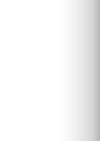1. Mortazavi MS, Sharifian S. Mercury bioaccumulation in some commercially valuable marine organisms from Mosa Bay, Persian Gulf. Int J Environ Res. 2011;5(3):757-62. [
Link]
2. Neves D, Sobral P, Ferreira JL, Pereira T. Ingestion of microplastics by commercial fish off the Portuguese coast. Mar Pollut Bull. 2015;101(1):119-26. [
Link] [
DOI:10.1016/j.marpolbul.2015.11.008]
3. Ozden O. Seasonal differences in the trace metal and macrominerals in shrimp (Parapenaus longirostris) from Marmara Sea. Environ Monit Assess. 2010;162(1-4):191-9. [
Link] [
DOI:10.1007/s10661-009-0787-y]
4. World Health Organization & International Programme on Chemical Safety. Guidelines for drinking-water quality, health criteria and other supporting information. 2nd Volume. 2nd Edition. Geneva: World Health Organization; 1996. pp. 31-388. [
Link]
5. Koshafar A, Velayatzadeh M. Risk assessment to consumers from mercury in Acanthopagrus latus. J Food Hyg. 2016;6(3):21-33. [Persian] [
Link]
6. Mardoukhi S, Hosseini SV, Hosseini SM. Risk to consumers from mercury in croaker (Otolithes ruber), from the Mahshahr port. Fish Sci Technol. 2013;2(3):43-55. [Persian] [
Link]
7. Ahmadi Kordestani Z, Hamidian A, Hosseini V, Ashrafi S. Risk assessment of mercury due to consumption of edible aquatic species. J Mar Biol. 2013;5(1):63-70. [Peraian] [
Link]
8. Akhbarizadeh R, Moore F, Keshavarzi B. Investigating a probable relationship between microplastics and potentially toxic elements in fish muscles from northeast of Persian Gulf. Environ Pollut. 2018;232:154-63. [
Link] [
DOI:10.1016/j.envpol.2017.09.028]
9. Malakootian M, Seddiq Mortazavi M, Ahmadi A. Heavy metals bioaccumulation in fish of Southern Iran and risk assessment of fish consumption. Environ Health Eng Manag J. 2016;3(2):61-8. [
Link] [
DOI:10.15171/EHEM.2016.02]
10. Askary Sary A, Karimi Sary V. Measurement and comparative of iron levels and Hazard Quotient (HQ) on muscle of farmed and marine fishes from Khuzestan, South West of Iran. Iran Sci Fish J. 2017;25(5):1-10. [Persian] [
Link]
11. Esmaili Sari A, Abdollahzadeh E, Joorabian Shooshtari Sh, Ghasempouri SM. Fish consumption limit for mercury compounds. J Fasa Univ Med Sci. 2011;1(2):82-9. [Persian] [
Link]
12. Keshavarzi B, Hassanaghaei M, Moore F, Rastegari Mehr M, Soltanian S, Lahijanzadeh AR, et al. Heavy metal contamination and health risk assessment in three commercial fish species in the Persian Gulf. Mar Pollut Bull. 2018;129(1):245-52. [
Link] [
DOI:10.1016/j.marpolbul.2018.02.032]
13. Sadeghi N. Morphological and biological characteristics of Southern Iranian fishes (Persian Gulf and Oman Sea). Tehran: Naghshe Mehr; 2001. [Persian] [
Link]
14. Lakshmanan R, Kesavan K, Vijayanand P, Rajaram V, Rajagopal S. Heavy metals accumulation in five commercially important fishes of Parangipettai, Southeast coast of India. Adv J Food Sci Technol. 2009;1(1):63-5. [
Link]
15. Blackmore G. 2001. Interspecific variation in heavy metal body concentrations in Hong Kong marine invertebrates. Environ Pollut. 2001;114(3):303-11. [
Link] [
DOI:10.1016/S0269-7491(01)00086-0]
16. UNEP, FAO, IAEA, IOC. Sampling of selected marine organisms and sample preparation for trace metal analysis [Internet]. Nairobi: UNEP; 1984. 2015 [cited 2017 Sep 21]. Available from: http://wedocs.unep.org/handle/20.500.11822/1364?show=full [
Link]
17. EPA. Supplemental guidance for developing soil screening levels for superfund sites [Internet]. Washington DC: USEPA; 2002 [cited 2017 Nov 19]. Available from: http://bit.ly/2xOcm5L [
Link]
18. USEPA (US Environmental Protection Agency). EPA/823-B94-004: Guidance for assessing chemical contamination data for use in fish advisories volume II, risk assessment and fish consumption limits. Washington: United States Environmental Protection Agency; 2000. [
Link]
19. USEPA (US Environmental Protection Agency). EPA/600/R-09/052F: Exposure actors handbook. Washington DC: National Center for Environmental Assessment; 2011. [
Link]
20. USEPA (US Environmental Protection Agency). Risk-based concentration table environmental protection agency. Philadelphia PA/Washington DC: 2011. [
Link]
21. EPA. EPA-503/8-89-002: Assessing human health risks from chemically contaminated fish and shellfish: A guidance manual [Internet]. Washington DC: US Environmental Protection Agency; 1989 [cited 2017 Sep 19]. Available from: http://bit.ly/2JGUFdM [
Link]
22. Cooper CB, Doyle ME, Kipp K. Risks of consumption of contaminated seafood: The Quincy Bay case study. Environ Health Perspect. 1991;90:133-40. [
Link] [
DOI:10.1289/ehp.90-1519503]
23. Chien LC, Hung TC, Choang KY, Yeh CY, Meng PJ, Shieh MJ, et al. Daily intake of TBT, Cu, Zn, Cd and As for fishermen in Taiwan. Sci Total Environ. 2002;285(1-3):177-85. [
Link] [
DOI:10.1016/S0048-9697(01)00916-0]
24. Canli M, Atli G. The relationships between heavy metal (Cd, Cr, Cu, Fe, Pb, Zn) levels and the size of six Mediterranean fish species. Environ Pollut. 2003;121(1):129-36. [
Link] [
DOI:10.1016/S0269-7491(02)00194-X]
25. Sobhanardakani S, Tayebi L, Farmany A, Cheraghi M. Analysis of trace elements (Cu, Cd, and Zn) in the muscle, gill, and liver tissues of some fish species using anodic stripping voltammetry. Environ Monit Assess. 2012;184(11):6607-11 [
Link] [
DOI:10.1007/s10661-011-2445-4]
26. Milošković A, Dojčinović B, Kovačević S, Radojković N, Radenković M, Milošević D, Simić V. Spatial monitoring of heavy metals in the inland waters of Serbia: a multispecies approach based on commercial fish. Environ Sci Pollut Res Int. 2016;23(10):9918-33. [
Link] [
DOI:10.1007/s11356-016-6207-2]
27. Akoto O, Bismark Eshun F, Darko G, Adei E. Concentrations and health risk assessments of heavy metals in fish from the Fosu lagoon. Int J Environ Res. 2014;8(2):403-10. [
Link]
28. Kotze P, Du Preez HH, Van Vuren JHJ. Bioaccumulation of copper and zinc in Oreochromis mossambicus and Clarias gariepinus, from the Olifants River, Mpumalanga, South Africa. Water SA. 1999;25(1):99-110. [
Link]
29. Esmaili Sari A, Abdollahzadeh E, Joorabian Shoostari Sh, Ghasempouri M. Fish Consumption Limit for Mercury Compounds. J Fasa Univ Med Sci. 2011;2(1):24-31. [Persian] [
Link]
30. FAO Fisheries and Aquaculture Department. The state of world fisheries and aquaculture. Food and Agriculture Organization of the United Nations; Rome: 2009. [
Link]




























